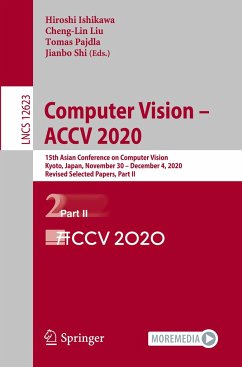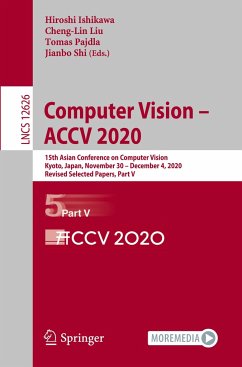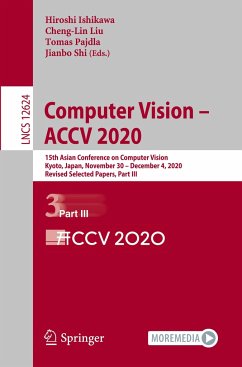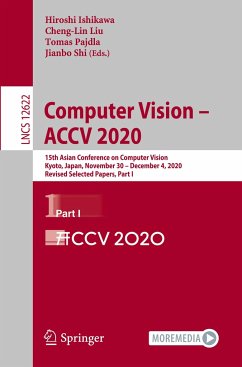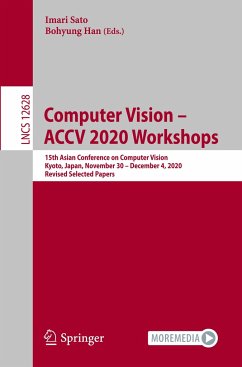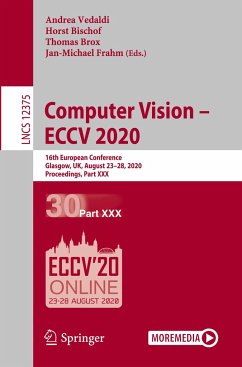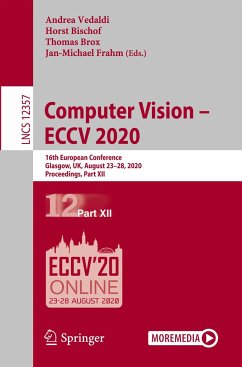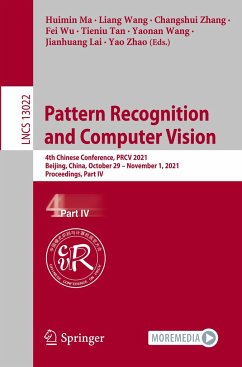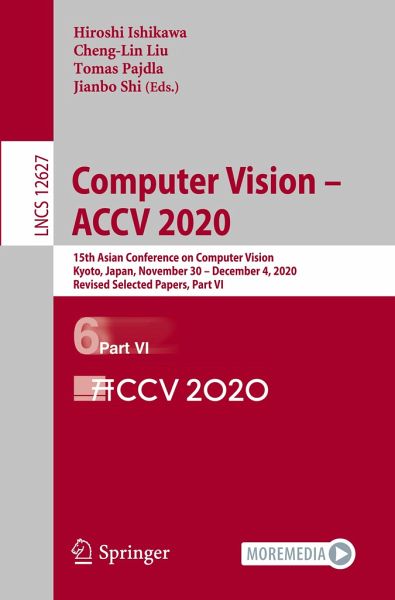
Computer Vision - ACCV 2020
15th Asian Conference on Computer Vision, Kyoto, Japan, November 30 - December 4, 2020, Revised Selected Papers, Part VI
Herausgegeben: Ishikawa, Hiroshi; Liu, Cheng-Lin; Pajdla, Tomas; Shi, Jianbo

PAYBACK Punkte
38 °P sammeln!
The six volume set of LNCS 12622-12627 constitutes the proceedings of the 15th Asian Conference on Computer Vision, ACCV 2020, held in Kyoto, Japan, in November/ December 2020._The total of 254 contributions was carefully reviewed and selected from 768 submissions during two rounds of reviewing and improvement. The papers focus on the following topics:Part I: 3D computer vision; segmentation and groupingPart II: low-level vision, image processing; motion and trackingPart III: recognition and detection; optimization, statistical methods, and learning; robot visionPart IV: deep learning for comp...
The six volume set of LNCS 12622-12627 constitutes the proceedings of the 15th Asian Conference on Computer Vision, ACCV 2020, held in Kyoto, Japan, in November/ December 2020._
The total of 254 contributions was carefully reviewed and selected from 768 submissions during two rounds of reviewing and improvement. The papers focus on the following topics:
Part I: 3D computer vision; segmentation and grouping
Part II: low-level vision, image processing; motion and tracking
Part III: recognition and detection; optimization, statistical methods, and learning; robot vision
Part IV: deep learning for computer vision, generative models for computer vision
Part V: face, pose, action, and gesture; video analysis and event recognition; biomedical image analysis
Part VI: applications of computer vision; vision for X; datasets and performance analysis
_The conference was held virtually.
The total of 254 contributions was carefully reviewed and selected from 768 submissions during two rounds of reviewing and improvement. The papers focus on the following topics:
Part I: 3D computer vision; segmentation and grouping
Part II: low-level vision, image processing; motion and tracking
Part III: recognition and detection; optimization, statistical methods, and learning; robot vision
Part IV: deep learning for computer vision, generative models for computer vision
Part V: face, pose, action, and gesture; video analysis and event recognition; biomedical image analysis
Part VI: applications of computer vision; vision for X; datasets and performance analysis
_The conference was held virtually.






